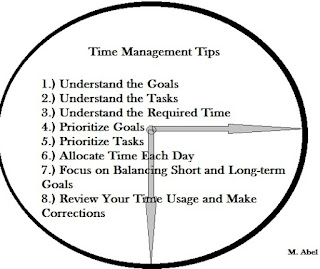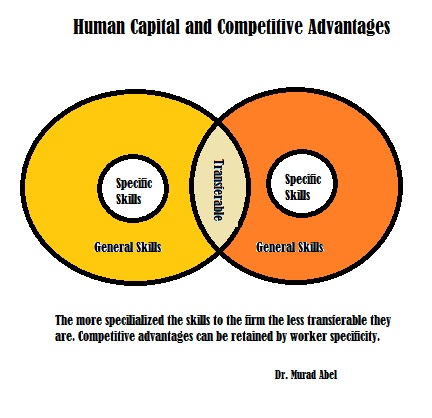Time management is of concern to
most managers and employees that have some control of their daily schedules. It
is also a concern to executives and managers that want their employees to be
productive at work. Those employees who know how to effectively manage their
time appear to have an advantage over those who don’t. Research helps highlight
how successful employees are in finding appropriate strategies to put their
efforts to maximum use.
Successful completion of goals
and tasks requires employees to maintain the ability to schedule their time
appropriately and make the most effective use of their efforts. The success of
the business, as well as it managers, rely on strong and poor time management (Bahtijarevic,
et. al., 2008). Time can be seen as a resource that when used effectively is a
competitive advantage to organizations when compared to those organizations the
ineffectively use time.
Successful time management can mean different things
to different people and should have a process. Time management requires the
ability to decide what should be accomplished, the importance of those tasks,
and the priority of these tasks (Lakein, 1973).
With an effective method employees are more knowledgeable of the
requirements each day and more focused in their efforts.
Effective time management requires a process that is
helpful in conceptualizing available time resources as allocated to the
organization. According to Macan et. al. it is necessary to 1.) set goals and
priorities; 2.) making lists; and 3.) have a preference for the organizations
needs (1990). Not having a preference
for the organization means that time will be used on more personal and less
constructive activities.
A study conducted by Mitrovic, et. al. (2013) helps
to understand time usage within a Serbian company and how businesses can more
effectively improve upon that time management. It aims to study the degree in
which employees effectively schedule their time and helps to define factors in this
effective time management. A total of
180 employees out of a possible 220 responded to the survey.
Results:
-Daily planning of the day’s tasks was best done
immediately after arriving at work. It is suggested that is a tallying of all
required tasks, their arrangement and then understanding the amount of time
each of them needs to be completed.
-56% of employees plan their schedules daily, 24% do
this irregularly, and 20% didn’t plan on a regular basis. This helps highlight
the use of time resources are not being effectively utilized.
-49% of employees know their most productive part of
the day, 22% do not know when their most productive time is and 29% are unsure
of when their most productive time is. Employees should understand when their
most productive times are and utilize this time effectively.
-70% of employees knew what the most important tasks
for tomorrow were, 12% didn’t know what the most important tasks for tomorrow
were and 17% were unsure. Employees should learn how to be more aware of
upcoming tasks and learn how to be proactive in their scheduling of time.
- 39% of employees did not update
their project plans, 27% of employees were not sure, and 34% updated their
project plans. Employees had more
difficulty managing their time on longer term projects.
The study helps highlight the
necessity of training employees to effectively use their time in order to
maximize time resources and human capital. The results indicate that
effectively managing time requires the use of lists of tasks that are
prioritized and have appropriate time allocated to each of these tasks. The
best time of the day to prioritize tasks is early in the morning. The longer
and more tasks the project requires the less ability employees have to plan
their time accordingly.
Bahtijarevic, et. al (2008). Siivremeni
menadzment. Zagreb, Skolska knjiga
Lakein, A. (1973). How to get control of your time and your
life. NY: New American Library.
Macan, et. al. (1990). College
students time management: correlations with academic performance and stress. Journal of Educational Psychology, 82.
Mitrovic, S., Bozidar, L, Knoja,
V. & Nesic, A. (2013). Employee time management: a case study from Serbia. Metalurgia International, 18 (1).
Bookmark with Your Social Network
Bookmark with Your Social Network

